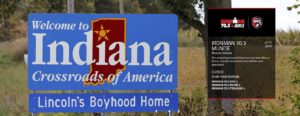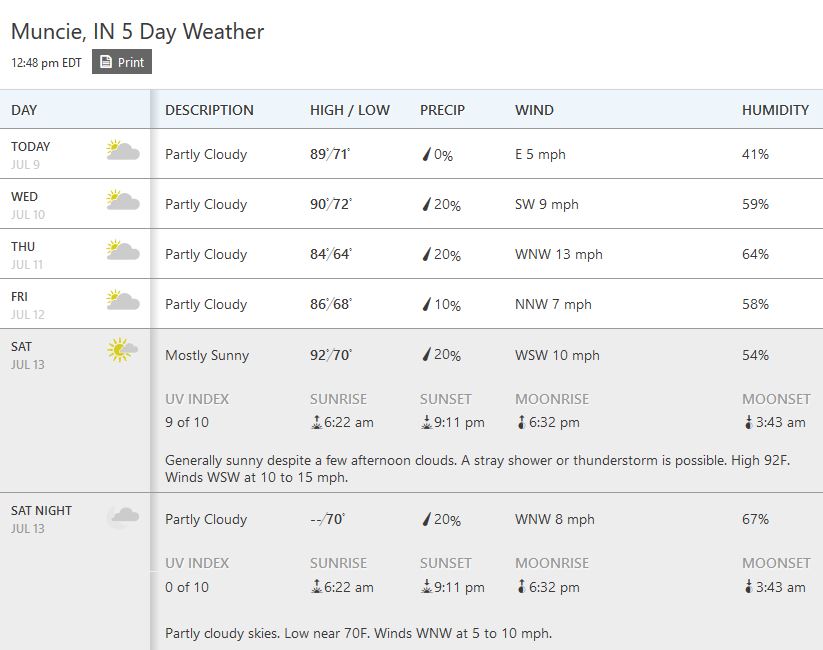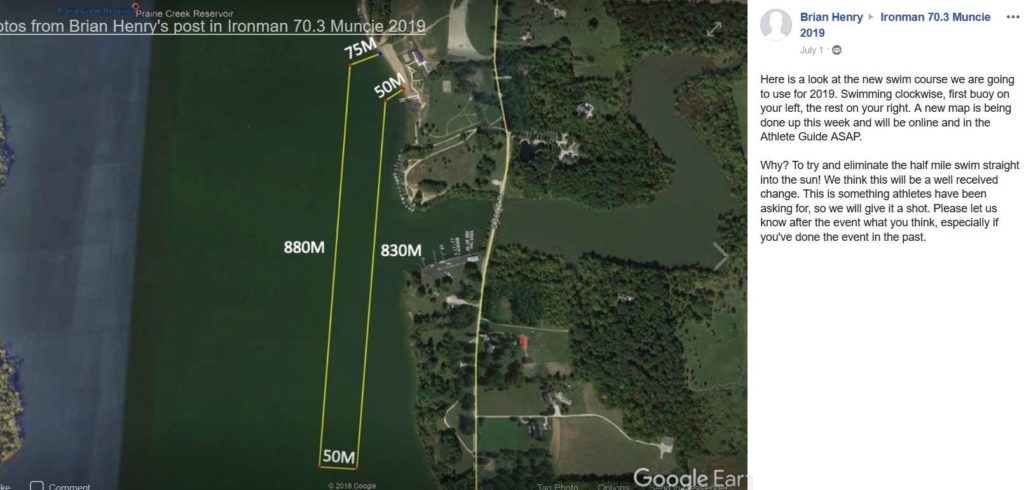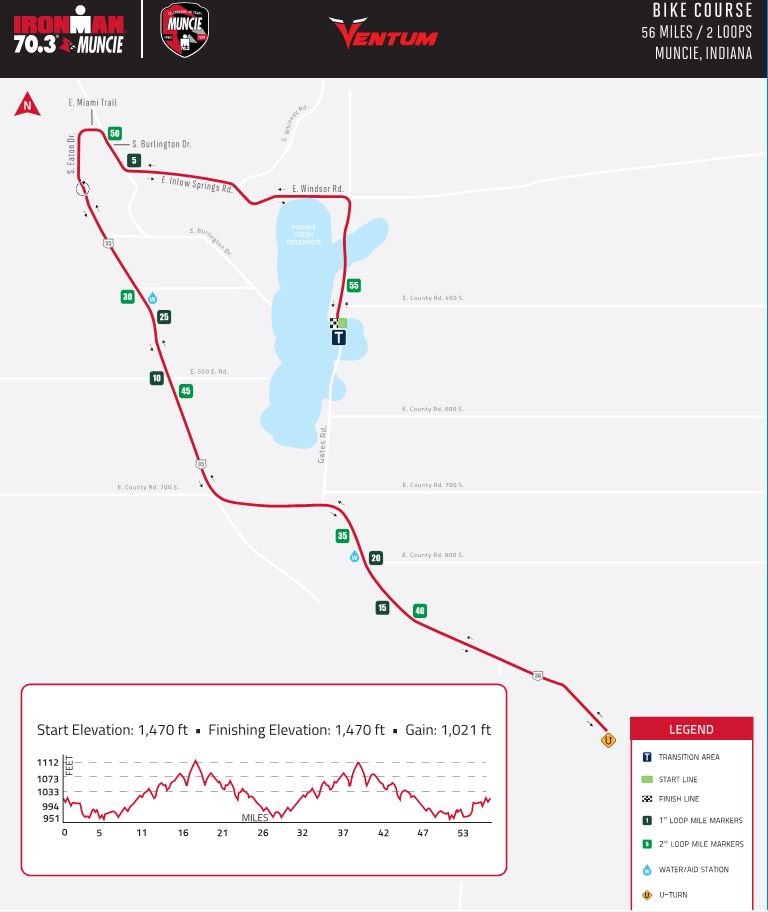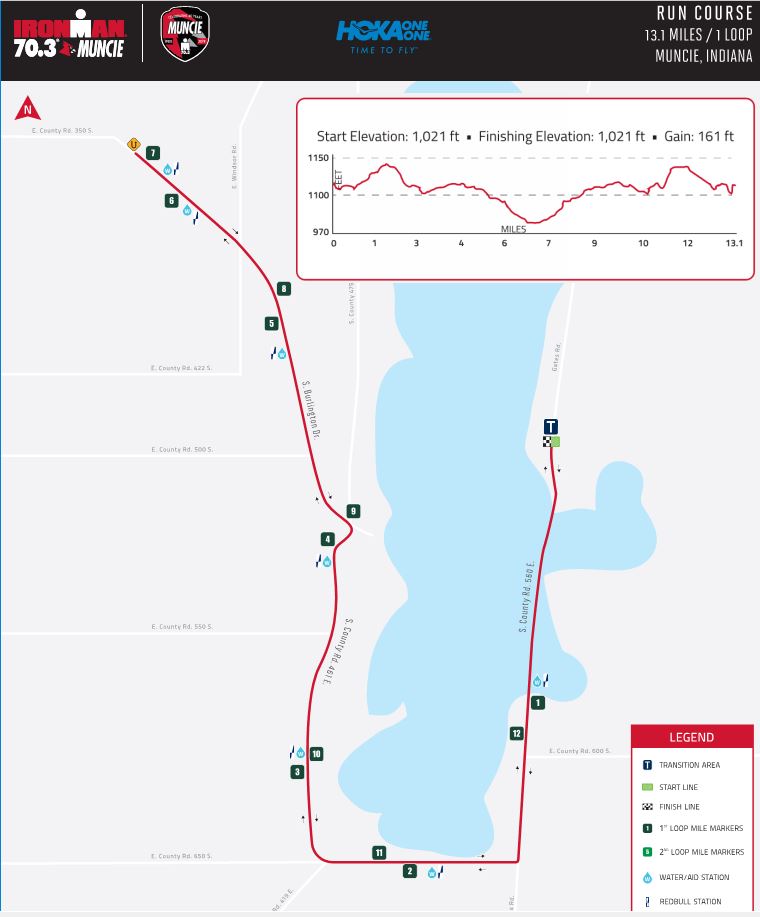IRONMAN 70.3 MUNCIE is HERE.
IRONMAN 70.3 Muncie is HERE. You’ve trained, you’ve prepared, don’t blow it by not being ready for the course!
With any event, I always recommend you READ THE ATHLETE GUIDE –> 2019 70 3 muncie athlete guide rs 2
WEATHER
High in the 90’s. Sunny. Humidity in 50-60% range. It’s going to be HOT!
Here’s my advice.
- Bring your wetsuit, as the water temp may be legal even with higher air temps, but don’t plan on it. Bring a speed suit for backup and be ready to swim.
- HYDRATE! Drink ALL your water days leading to, morning of and on the bike.
- SUNCREEN. Apply early and often. Typically races will have a sunscreen station, but bring your own for backup. It’s going to get crispy on the bike and run.
- On the run, whatever water you don’t drink, dump on your head. Do what you can to stay cool.
- Be ready to dial back the effort if you start spiking HR. This may not be the best conditions to push for a PR.
- Your drinks will get hot on the bike and in transition. Keep refrigerated over night and add ice in the morning if you can.
- Running hat. Sunglasses. Protect everything you can!
SWIM
Rectangle out and back with 2 real turns and two minor hitch turns. And, despite what’s in the guide, the RD posted this change on the FB group, so stay informed as this does not match the guide.
From the IM site, “The 1,275 acre body of water will have an expected water temperature of 78 F. Due to the size of Prairie Creek Reservoir, the water temperature can change quickly race week so participants are advised to bring a wetsuit if they have one. The water is usually very calm, but heavy winds can cause the water to become slightly choppy.”
Key points:
- Make sure to keep sighting and not just head down swimming. You can get off course with that long from start/finish to turns.
- Consider shaded goggles. At some point you might be facing the sun depending on your breathing side even with the course change.
- Bring a full sleeve wetsuit and know how to get it on and speed suit for backup.
- Know what color the buoys are for turns so you have an idea when the turn is on you.
- Swim wide of the turns if you want to minimize contact.
- Look at the course BEFORE you start. It helps cut down anxiety when you have something for your brain to work on. Look at the start chute. Know target 1, 2, etc and where turns are. Locate land markers for sighting. When you’re in the water, it’s too late to figure that out.
- RELAX. Take the first few 100 yards easy. Find your rhythm. Swim your race. Don’t do anaerobic and freak out looking for air. You are not going to be able to shoot out at your sprint pace and hold it despite that HUGE shot of adrenaline that you will get when you jump in.
THE BIKE
1000 feet of gain over 56 miles, that’s BUTTER. Word on the street the roads are recently paved as well. Should be a hammer fest.
From the IM site, “Athletes can expect a very fast out-and-back bike course with 56 miles of closed state highways and country roads that wind through rural Delaware and Henry counties. The course hovers approx. 1,000 feet above sea level with less than a couple hundred feet of elevation change. Light winds usually favor athletes on the return trip.”
TIPS
- Two loops, but an out and back. Study the course the first time out to know where you can be aggressive.
- Sunscreen in T1. You will be glad you did!
- HYDRATE ON THE BIKE!!!!!!!!
- Coming out of T1, don’t gun it no matter how great you feel. Give yourself 20 minutes to calm down and find your targets. Your HR should settle and it will be easier to listen to your body.
- Resist the urge to fly with a tailwind and hammer it. If you have it at the start and come back on the loop with a headwind, it will be morally defeating to not be able to hold consistent speed or power since you burned it up with the tailwind. Trust me.
- FOCUS FOCUS FOCUS on nutrition and hydration. I always preach the goal is to be 2 to 3% dehydrated off the bike. You cannot avoid losing no matter how much you think you can take in, so don’t play that game, but make sure you plan your fluids and nutrition how you trained. You trained like that, right? You don’t want to be in the 5 to 6% dehydrated range rolling into T2. TRUST ME.
- The bike is an energy management equation. If you go through too much, you cannot get it back for the run. Better to pull back and give up 10 minutes on the bike so you don’t give up 2 minutes per mile or more walking on the run. Even if the weather is great and you feel great, race your plan!
THE RUN
160 feet of gain over 13.1 miles isn’t half bad. It will be peaking on the heat, so you will know if you played the hydration game right on the bike early.
From the IM site, “After the fast out-and-back bike course athletes are treated to a competitive run around the south side of Prairie Creek Reservoir. The course continues over rolling hills that challenge athletes before finishing back at Prairie Creek Reservoir.”
TIPS
- Check your bike chain and shifting pre-race! Almost got bit by that this year myself with a dropped chain when I racked my bike.
- Sunscreen up in T2. You don’t want to suffer out there turning into a lobster.
- Keep the pace and effort in check out of T2. You will have a chance to burn off that excitement over 13.1 miles. Don’t burn down in 3 miles and suffer for 10.
- Keep hydrating on the run. Walk the aid stations if needed to stay on top of it.
- Notice going out isn’t half bad, but coming back is a consistent grade heading up. Don’t set the world on fire heading out at a pace you can’t maintain coming back in with overall elevation gain.
- Lean at the ankles, keep cadence at 80+ and focus on form. Find efficiency focus to distract from the heat.
- Water on head, cold sponges, take whatever they got at aid stations early and often and stay cool.
ANY QUESTIONS? WHAT DID I MISS?
And as a bonus to those that read ALL THE WAY THROUGH, here is a link to my Triathlon Checklist I use to travel to races. Enjoy.

